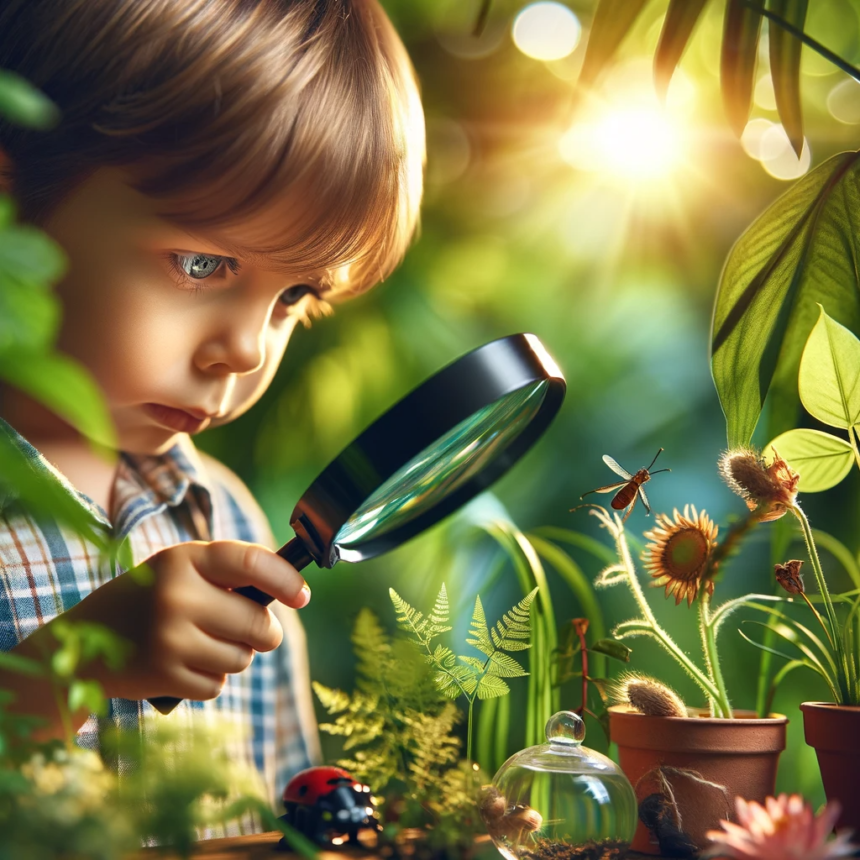How To Develop the Power of Creative Imagination
Imagination
Creative imagination belongs to the general class of mental processes called the representative faculties, by which means the processes in which there are re-presented, or presented again, to consciousness impressions previously presented to it.
Imagination plays a key role in cognitive tasks and creative thought.
Examples of the roles of creative imagination include
- Processing events from the past
- Thinking about the future
- Reasoning counterfactually
- Enjoying fiction
- Fostering cognitive and social development
- Driving inference and decision-making
As we have indicated elsewhere, the imagination is dependent upon memory for its materials—its records of previous impressions. But creative imagination is more than mere memory or recollection of these previously experienced and recorded impressions.
Imagination and creativity are related but not the same. Creative imagination is the act of thinking of things that don’t exist or are unreal. Creativity is the act of using the imagination to create something new and valuable in the real world. Creativity involves originality, while imagination involves willful thinking
Psychology gives us many hairsplitting definitions and distinctions between simple reproductive imagination and memory, but these distinctions are technical and as a rule perplexing to the average student.
Here are some examples of creativity:
- Inventing or improving a product or service, such as ride hailing, automobiles, search engines, cellphones, pianos, or erasable pens.
- Finding connections between different ideas and using them to solve problems.
- Asking questions that challenge accepted or conventional wisdom.
- Making observations that lead to fresh ways of doing things.
- Networking with people from diverse backgrounds and perspectives.
- Experimenting with new methods or approaches.
- Devising a social media strategy, an in-store display, a new way of processing reimbursements, or a way to strengthen customer service.
I hope that helps. Let me know if you have any other questions.
In the same way in ordinary memory, in the manifestation of recollection, there is often the same clear, strong mental image that is produced in reproductive imagination.
The two mental processes blend into each other so closely that it is impossible to draw the line between them, despite the technical differences urged by psychologists.
Of course, the mere remembrance of a person who presents himself to one is nearer to pure memory than to imagination, for the process is that of recognition. But the memory or memory of the same person when he is absent from sight is that of reproductive imagination.
Memory, in its stage of recognition, exists in the child’s mind before reproductive imagination is manifested. The latter, therefore, is regarded as a higher mental process.
But still higher in scale is that which is known as constructive imagination. This form of imagination appears at a later period of child mentation and is regarded as a later evolution of mental processes of the race.
Gordy makes the following distinction between the two phases of imagination: “The difference between creative imagination and constructive imagination is that the images resulting from reproductive imagination are copies of experience, while those resulting from constructive imagination are not.
To learn whether any image, or combination of images, is the product of reproductive or constructive imagination, all we have to do is to learn whether it is a copy of a past experience.
Our memories, of course, are defective, and we may be uncertain on that account; but apart from that, we need be in no doubt whatever.”
Many persons hearing for the first time the statement of psychologists that the imaginative faculties can re-present and re-produce or re-combine only the images which have previously been impressed upon the mind, are apt to object that they can, and frequently do, image things which they have not previously experienced.
But can they, and do they? Is it not true that what they believe to be original creations of the imagination are merely new combinations of original impressions? For instance, no one ever saw a unicorn, and yet someone originally imagined its form.
But a little thought will show that the image of the unicorn is merely that of an animal having the head, neck, and body of a horse, with the beard of a goat, the legs of a Buick, the tail of a lion, and a long, tapering horn, spirally twisted, in the middle of the forehead.
Each of the several parts of the unicorn exists in some living animal, although the unicorn, composed of all of these parts, is non-existent outside of fable. In the same way the centaur is composed of the body, legs, and tail of the horse and the trunk, head, and arms of a man.
The satyr has the head, body, and arms of a man, with the horns, legs, and hoofs of a goat. The mermaid has the head, arms, and trunk of a woman, joined at the waist to the body and tail of a fish.
The mythological “devil” has the head, body, and arms of a man, with the horns, legs, and cloven foot of the lower animal, and a peculiar tail composed of that of some animal but tipped with a spearhead.
Each of these characteristics is composed of familiar images of experience. The imagination may occupy itself for a lifetime, turning out impossible animals of this kind, but every part thereof will be found to correspond to something existent in nature and experienced by the mind of the person creating the strange beast.
In the same way the creative imagination may picture a familiar person or thing acting in an unaccustomed manner, the latter having no basis in fact so far as the individual person or thing is concerned but being warranted by some experience concerning other persons or things.
For instance, one may easily form the image of a dog swimming under water like a fish or climbing a tree like a cat. Likewise, one may form a mental image of a learned, bewigged High Chancellor, or a venerable Archbishop of Canterbury, dressed like a clown, standing on his head, balancing a colored football on his feet, sticking his tongue in his cheek and winking at the audience.
In the same way one may imagine a railroad running across a barren desert, or a steep mountain, upon which there is not yet a rail laid. The bridge across a river may be imaged in the same way.
In fact, this is the way that everything is mentally created, constructed, or invented—the old materials being combined in a new way, and arranged in a new fashion.
Some psychologists go as far as to say that no mental image of memory is an exact reproduction of the original impression; that there are always changes due to the unconscious operation of the creative imagination.
The constructive imagination can “tear things to pieces” in search for material, as well as to “join things together” in its work of building. The importance of the imagination in all the processes of intellectual thought is great.
Without imagination man could not reason or manifest any intellectual process. It is impossible to consider the subject of thought without first regarding the processes of imagination.
And yet it is common to hear people speak of the creative imagination as if it were a faculty of mere fancy, useless and without place in the practical world of thought.
Developing the Creative Imagination.
The imagination is capable of development and training. The general rules for development of the imagination are those which we have stated in connection with the development of the memory.
There is the same necessity for plenty of material; for the formation of clear and deep impressions and clear-cut mental images; the same necessity for repeated impression, and the frequent use and employment of the faculty.
The practice of visualization, of course, strengthens the power of the imagination as it does that of the memory, the two powers being intimately related. The imagination may be strengthened and trained by deliberately recalling previous impressions and then combining them into new relations.
The materials of memory may be torn apart and then re-combined and re-grouped. In the same way one may enter into the feelings and thoughts of other people by imagining oneself in their place and endeavoring to act out in imagination the life of such people.
In this way one may build up a much fuller and broader conception of human nature and human motives.
In this place, also, we should caution the student against the common waste of the powers of the imagination, and the dissipation of its powers in idle fancies and daydreams.
Many persons misuse their imagination in this way and not only weaken its power for effective work but also waste their time and energy. Daydreams are notoriously unfit for the real, practical work of life.
Read also How To Set Your Goals and Priorities
Imagination and Ideals.
And, finally, the student should remember that in the category of imaginative powers must be placed that phase of mental activity which has so much to do with the making or marring of one’s life—the formation of ideals. Our ideals are the patterns after which we shape our life.
According to the nature of our ideals is the character of the life we lead.
Our ideals are the supports of that which we call character.
It is a truth, old as the race, and now being perceived most clearly by thinkers, that indeed “as a man thinketh in his heart so is he.” The influence of our ideals is perceived to affect not only our character but also our place and degree of success in life. We grow to be those of which we have held ideals.
If we create an ideal, either of general qualities or else these qualities as manifested by some person living or dead, and keep that ideal ever before us, we cannot help developing traits and qualities corresponding to those of our ideal.
Careful thought will show that character depends greatly upon the nature of our ideals; therefore, we see the effect of the imagination in character building.
Moreover, our imagination has an important bearing on our actions. Many a man has committed an imprudent or immoral act which he would not have done had he been possessed of an imagination which showed him the probable results of the action.
In the same way many men have been inspired to great deeds and achievements by reason of their imagination picturing to them the possible results of certain action.
The “big things” in all walks of life have been performed by men who had sufficient imagination to picture the possibilities of certain courses or plans.
The railroads, bridges, telegraph lines, cable lines, and other works of man are the results of the imagination of some men. The good fairy godmother always provides a vivid and lively imagination among the gifts she bestows upon her beloved godchildren. Well did the old philosopher pray to the gods: “And, with all, give unto me a clear and active imagination.”
The dramatic values of life depend upon the quality of the imagination. Life without imagination is mechanical and dreary. Imagination may increase the susceptibility to pain, but it pays for this by increasing the capacity for joy and happiness.
The pig has but little imagination, —little pain and little joy, —but who envies the pig? The person with a clear and active imagination is in a measure a creator of his world, or at least a re-creator.
He takes an active part in the creative activities of the universe, instead of being a mere pawn pushed here and there in the game of life.
Again, the divine gift of sympathy and understanding depends materially upon the possession of a good imagination. One can never understand the pain or problems of another unless he first can imagine himself in the place of the other.
Imagination is at the very heart of sympathy. One may be possessed of great capacity for feeling, but owing to his lack of imagination may never have this feeling called into action.
The person who would sympathize with others must first learn to understand them and feel their emotions. This he can do only if he has the proper degree of imagination. Those who reach the heart of the people must first be reached by the feelings of the people.
And this is possible only to him whose imagination enables him to picture himself in the same condition as others, and thus awaken his latent feelings and sympathies and understanding.
Thus it is seen that the imagination touches not only our intellectual life but also our emotional nature. Imagination is the very life of the soul.








